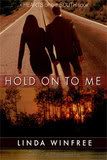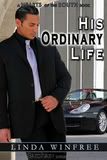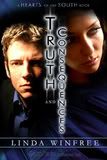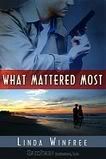The Villain Tri-Fecta: Part Three -- Your Villain's Journey
So, the short of it is, I don't know where the theory came from...originally. But it's worth considering as you create your villain and plot your book.
It took me a while to fully get this concept. I knew about it, thought about it, tried to apply it (and continue to try), but somehow I couldn't get around the fact that I believed:
- There can only be one hero in the book
- My villain couldn't be a villain if he acted like his own hero
Recently, while replotting and deepening my characters in Safe, I think a little twinkling of this finally shone through. Here's my take on it:
Here's my take on it:
Just as you can't have your hero/heroine reacting throughout the story to what the villain does, you can't have your villain reacting to your hero/heroine's attempts to thwart him.
Strong, compelling characters don't react, they act. They have their own goals, their own reasons for wanting what they want and their own ideas about how to get it.
Yes, even your villain has to have a rich, well-defined GMC. And, as I outlined in the first two blogs of my villain-themed posts, if his motivation is simply evil intent, your villain will be as interesting as cardboard.
Creating a journey for your villain is no different from creating a journey for your hero. It's just that the hero travels on the light side of the mountain, the villain travels on the dark side.
First, your villain has to be as worthy of your hero, just as your hero has to be worthy of your villain. A compelling story has an evenly matched hero/villain pair, although the story might start out with a far stronger villain, for which the hero has to attain greater skills to combat and overcome--Darth Vader to Luke Skywalker, for instance.
A riveting story has moments where your reader fears the villain may actually win. Where it seems as if the villain is stronger, smarter, more powerful than your hero and that in fact, it seems there is no way for your hero to prevail.
Second, for the villain to be a formidable opponent, he needs strong traits, both good and bad--intelligence, power, strength, greed, pride, ego and compelling motivation--stakes as high as you can make them--self-respect, livelihood, life itself, whatever is most important to your character.
Third, your villain can't be shy about using whatever is at his disposal to:
- Keep your hero from getting what he wants
- Keep your hero from getting in the way of what your villain wants
- Getting what he (the villain) wants
Your villain should not be on a straight and narrow path toward a goal. When your hero gets in the villain's way, your villain needs to outsmart your hero, use your hero's very traits (positive or negative) against him. Your villain needs a game plan, alternatives for when the road gets rocky, when plans go awry.
Then, of course, you have to push your hero past his limitations (physical, mental, emotional) and achieve positive change, save the day, attain his goal.
A truly formidable villain creates a truly heroic hero.







1Comments:
I love that last line.
A truly formidable villain creates a truly heroic hero.
I'm writing it down. Great post, J!!
Post a Comment
<< Home